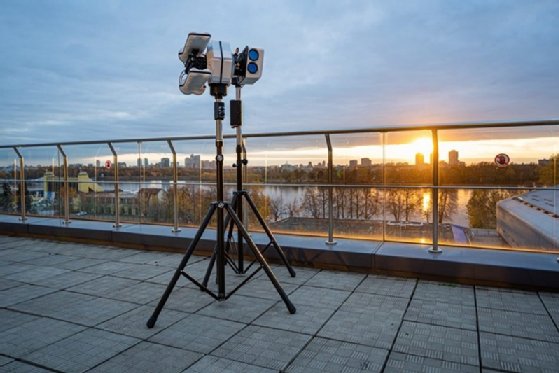
IgorZh - stock.adobe.com
Rogue drones beware: We’re here to ground you
Eugene Kaspersky exclusively lifts the lid on a mysterious, shiny device that’s been sitting in his office
For a few weeks now, a mysterious, shiny, clearly high-tech, futuristic device has been complementing the minimalistic furniture of my corner office at our headquarters.
It’s so shiny and fancy and slick and postmodern, that whenever I get a visitor – which is not often of late due to our general remote working policy – it’s the first thing they notice and the first question is always, simply, obviously, “What is that?”.
Before I tell you – a quick digression…
Traditionally, once a year, we have an internal Ask Me Anything (AMA) session, where our employees hear about what’s been going on in the company over the past year and what’s being planned, and also put questions to the senior management, and so on.
But this past year – given that it’s just so darn 2020 – we’ve been having AMA sessions more often. Most folks are sat at home and the daily news in the media is often rather depressing, so a mood boost was deemed appropriate and thus prescribed. So we’ve been doing an AMA broadcast once every quarter.
During the last AMA, someone in the audience asked: “What’s that mysterious… whatever it is, stood behind you?” And before I had a chance to answer, in the simultaneous online chat that comes with the AMA, all sorts of theories quickly sprang up – the most interesting to me being “lie detector”!
But no. It’s not a lie detector. However, what it is, is even more curiously interesting than a lie detector would have been. And so, here, finally, after much hard toil from our R&D heroes, I can introduce our new Antidrone device.

It’s “anti”-drone, as in it shoos off drones that may come too close to things such as guarded critical infrastructure objects. Remember when Gatwick Airport came to a standstill with 1,000 flights delayed while an unknown drone was being flown over it? Our Antidrone would be suitable for protecting against things like that, for example.
Think of it as a modern-day, digital-era scarecrow! At a stretch – it even roughly resembles the outline shape of a scarecrow! But it acts like one too – scaring off unwanted drones, but in a modern, “active” way, unlike the old-school, passive scarecrow way (just standing there, scaring with its appearance). Antidrone is smart, proactive and can actually knock out unwanted drones.
So how does it work?
Well, if an unknown drone flies too close to a protected object, Antidrone first starts a “dialogue” with it. If that dialogue goes well, the drone realises it’s not welcome, about-turns, and flies away. If the dialogue goes badly, Antidrone thinks: “I can’t go for that (no can do)” and jams it with a radio signal, forcing it to land – softly (we’re not barbarians!).
That’s it in a nutshell.
Now for some detail…
The Antidrone is a development of ours based on machine learning that uses neural networks to analyse data from various sensors to be able to detect drones approaching protected no-fly zones.
Using lidar and machine-vision, Antidrone can automatically scan and analyse airspace for suspicious drones (it takes less than a second), and the results are shown on a convenient graphics interface that shows a map, threat logs, data on particular models of drones it finds, and a lot more besides.
Straight after the above-mentioned dialogue, the system immediately signals if a given drone’s flight is permitted and all is okay. If there’s potential for danger, the hardware receives a signal from the software to neutralise the threat. First, the drone is asked politely to leave. If that doesn’t work, different methods of persuasion are applied – but always well within legal bounds, just in case you were wondering.
Antidrone will be of most interest to organisers of mass outside gatherings and events, owners of industrial and assorted other critical infrastructure assets and, of course, to airports. These things clearly need protecting from drones and the dangers they pose and the costly disruptions they may cause.
Finally, Antidrone has a few other non-standard applications that are no less interesting. An enhanced version of the neural network can also search for, say, cars or folks lost in a forest. After detecting tiny drones in a vast sky, tasks like these should be a cakewalk. Still, the enhanced version is still in its early stages of development, so I’ll tell you more about it another time.










